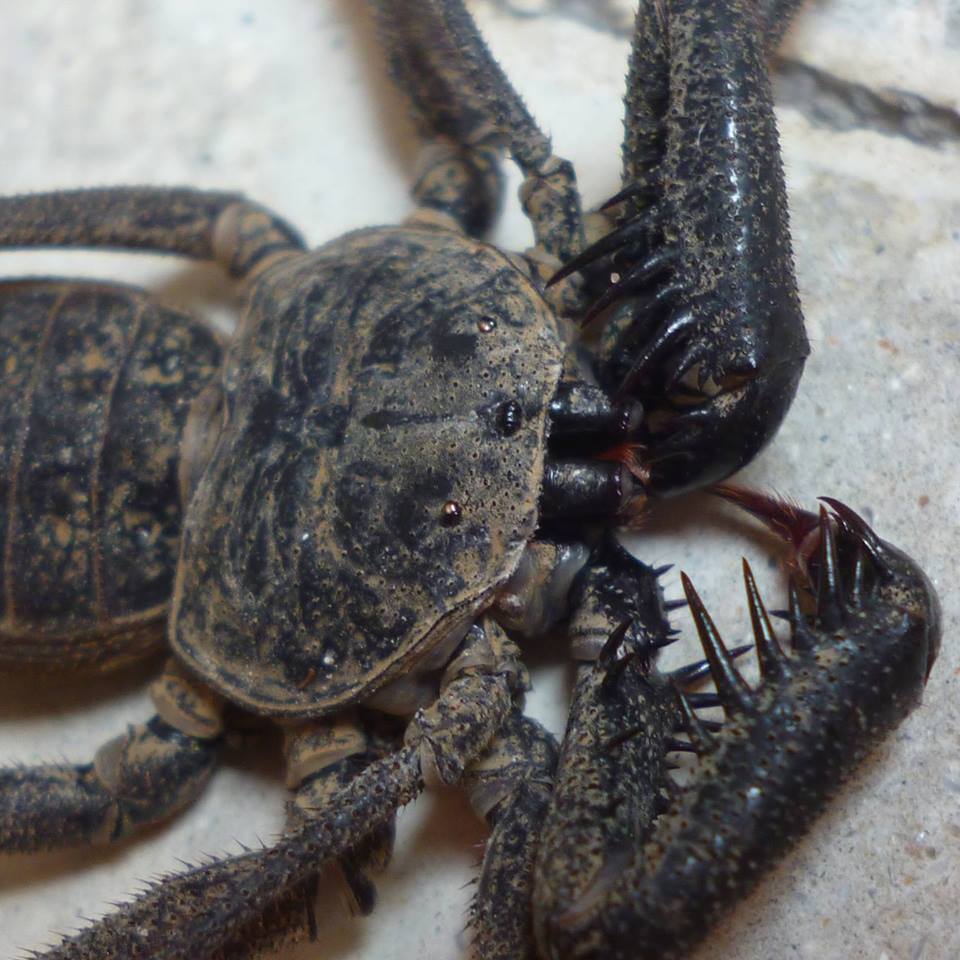Paraphrynus on:
[Wikipedia]
[Google]
[Amazon]
''Paraphrynus'' is a genus of whip spiders, also known as tailless whip scorpions (order
 This
This
Amblypygi
Amblypygi is an ancient order of arachnid chelicerate arthropods also known as African cave-dwelling spiders, whip spiders and tailless whip scorpions (not to be confused with whip scorpions or vinegaroons that belong to the related order Thelyph ...
), of the family Phrynidae
Phrynidae is a family of amblypygid arachnida arthropods also known as whip spiders and tailless whip scorpions. Phrynidae species are found in tropical and subtropical regions in North and South America. Some species are subterranean; all are no ...
. It is distributed from the southwestern United States
The United States of America (U.S.A. or USA), commonly known as the United States (U.S. or US) or America, is a country primarily located in North America. It consists of 50 states, a federal district, five major unincorporated territorie ...
to Central America
Central America ( es, América Central or ) is a subregion of the Americas. Its boundaries are defined as bordering the United States to the north, Colombia to the south, the Caribbean Sea to the east, and the Pacific Ocean to the west. ...
, including several Caribbean islands
Almost all of the Caribbean islands are in the Caribbean Sea, with only a few in inland lakes. The largest island is Cuba. Other sizable islands include Hispaniola, Jamaica, Puerto Rico and Trinidad and Tobago. Some of the smaller islands are re ...
. Most species are endemic to Mexico
Mexico (Spanish: México), officially the United Mexican States, is a country in the southern portion of North America. It is bordered to the north by the United States; to the south and west by the Pacific Ocean; to the southeast by Guatema ...
.
Taxonomy
 This
This genus
Genus ( plural genera ) is a taxonomic rank used in the biological classification of extant taxon, living and fossil organisms as well as Virus classification#ICTV classification, viruses. In the hierarchy of biological classification, genus com ...
can be told apart from ''Phrynus'' by observing the patella of the pedipalp
Pedipalps (commonly shortened to palps or palpi) are the second pair of appendages of chelicerates – a group of arthropods including spiders, scorpions, horseshoe crabs, and sea spiders. The pedipalps are lateral to the chelicerae ("jaws") and ...
, which in ''Phrynus'' has one small spine between the two largest, while ''Paraphrynus'' has two. It can be distinguished from ''Acantophrynus'' by its lack of spines in the frontal region of the carapace
A carapace is a Dorsum (biology), dorsal (upper) section of the exoskeleton or shell in a number of animal groups, including arthropods, such as crustaceans and arachnids, as well as vertebrates, such as turtles and tortoises. In turtles and tor ...
. The remaining member of the family Phrynidae, ''Heterophrynus,'' does not seem to be sympatric
In biology, two related species or populations are considered sympatric when they exist in the same geographic area and thus frequently encounter one another. An initially interbreeding population that splits into two or more distinct species sh ...
with any species of this genus.
There are about 18 species:
* '' Paraphrynus aztecus'' (Pocock, 1894)
* '' Paraphrynus baeops'' (Mullinex, 1975)
* '' Paraphrynus carolynae'' Armas, 2012
* '' Paraphrynus chacmool'' (Rowland, 1973)
* '' Paraphrynus chiztun'' (Rowland, 1973)
* '' Paraphrynus cubensis'' Quintero, 1983
* '' Paraphrynus emaciatus'' Mullinex, 1975
* '' Paraphrynus grubbsi'' Cokendolpher and Sissom, 2001
* '' Paraphrynus laevifrons'' (Pocock, 1894)
* '' Paraphrynus leptus'' Mullinex, 1975
* '' Paraphrynus macrops'' (Pocock, 1894)
* '' Paraphrynus maya'' Armas, Trujillo & Agreda 2017
* '' Paraphrynus mexicanus'' (Bilimek, 1867)
* '' Paraphrynus olmeca'' Armas & Trujillo 2018
* '' Paraphrynus pococki'' Mullinex, 1975
* '' Paraphrynus raptator'' (Pocock, 1902)
* '' Paraphrynus reddelli'' Mullinex, 1979
* '' Paraphrynus robustus'' (Franganillo, 1931)
* '' Paraphrynus velmae'' Mullinex, 1975
* '' Paraphrynus viridiceps'' (Pocock, 1894)
* '' Paraphrynus williamsi'' Moreno, 1940
Biology
Like other Amblypygi, the species in this genus are nocturnal predators that dwell in moist microenvironments. Some species are troglophiles and some are truetroglobites
A troglobite (or, formally, troglobiont) is an animal species, or population of a species, strictly bound to underground habitats, such as caves. These are separate from species that mainly live in above-ground habitats but are also able to live u ...
. They feed upon insects and other arachnids.
''Paraphrynus'' have flattened bodies that are approximately 3/8” (3-11 mm) long, with spiny pedipalps and antennae-like legs referred to as antenniform legs. The front, first pair of legs are long filamentous or whip-like tips, while the other 3 pairs of legs are positioned to the side, crablike. The longer front legs are sensory organs that are used to "feel" about and locate its prey, which they then ensnare with the spiny pedipalps. Research conducted by biologists also found that the front legs of ''P. laevifronsis'' are used to navigate to their refuge prior to dawn, usually spending the night hunting for prey on the vertical surfaces of tree trunks in a neotropical
The Neotropical realm is one of the eight biogeographic realms constituting Earth's land surface. Physically, it includes the tropical terrestrial ecoregions of the Americas and the entire South American temperate zone.
Definition
In bioge ...
environment.Bingman, V.P.; Graving, J.M.; Hebets, E.A.; Wiegmann, D.D. (2017). “Importance of the antenniform legs, but not vision, for homing by the neotropical whip spider Paraphrynus laevifrons”. Journal of Experimental Biology. 220: 885-890. Doi: 10.1242/jeb.149823References
{{Taxonbar, from=Q2562048 Amblypygi Cave arachnids